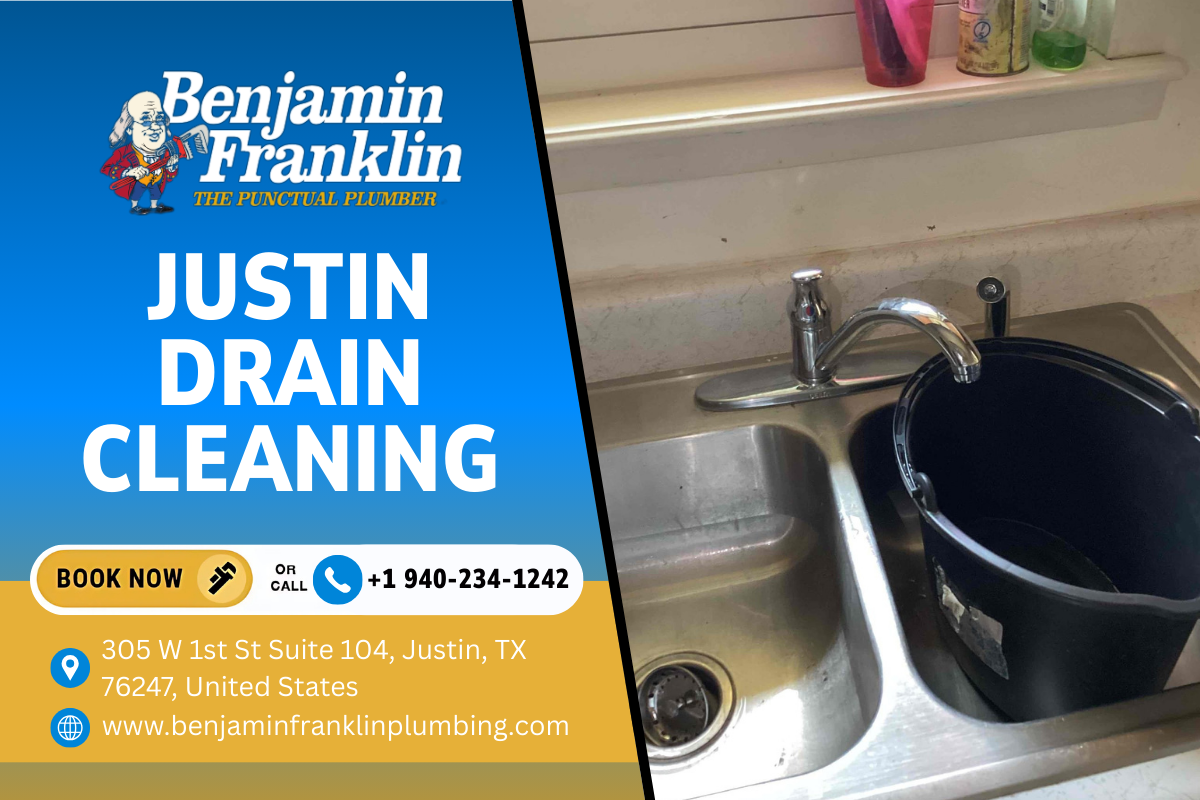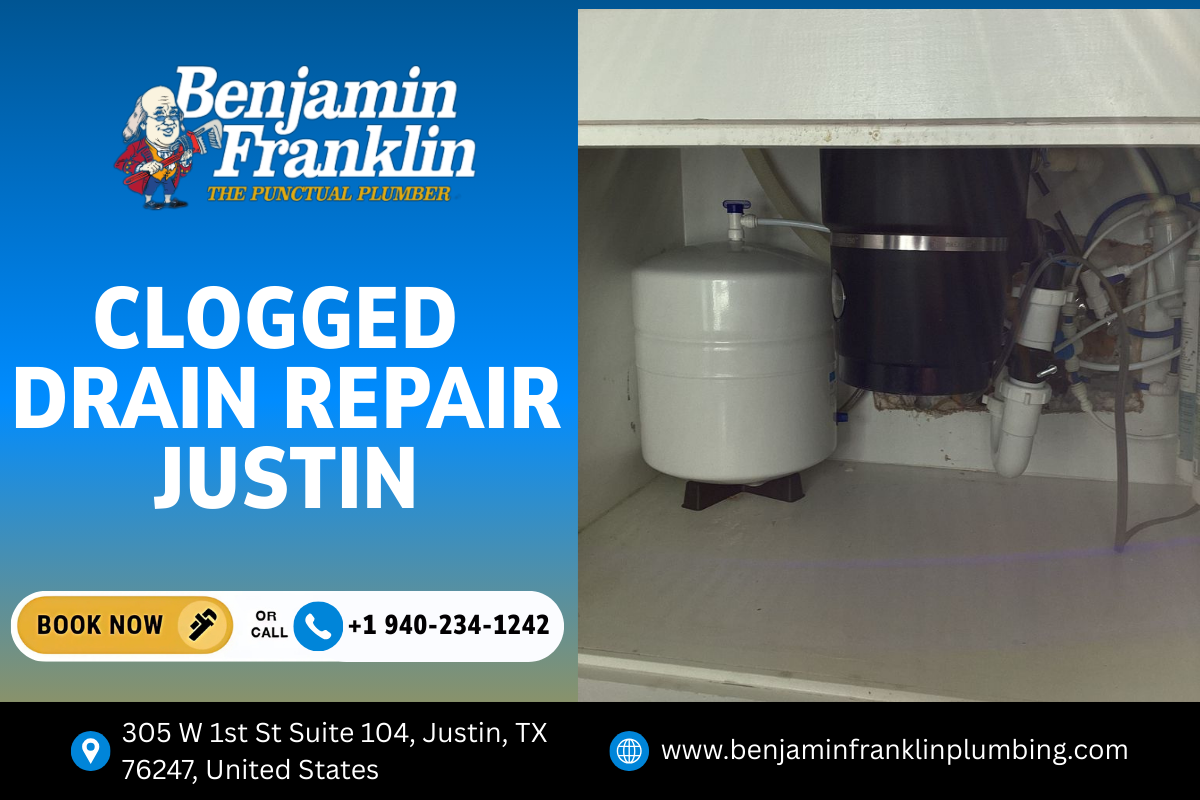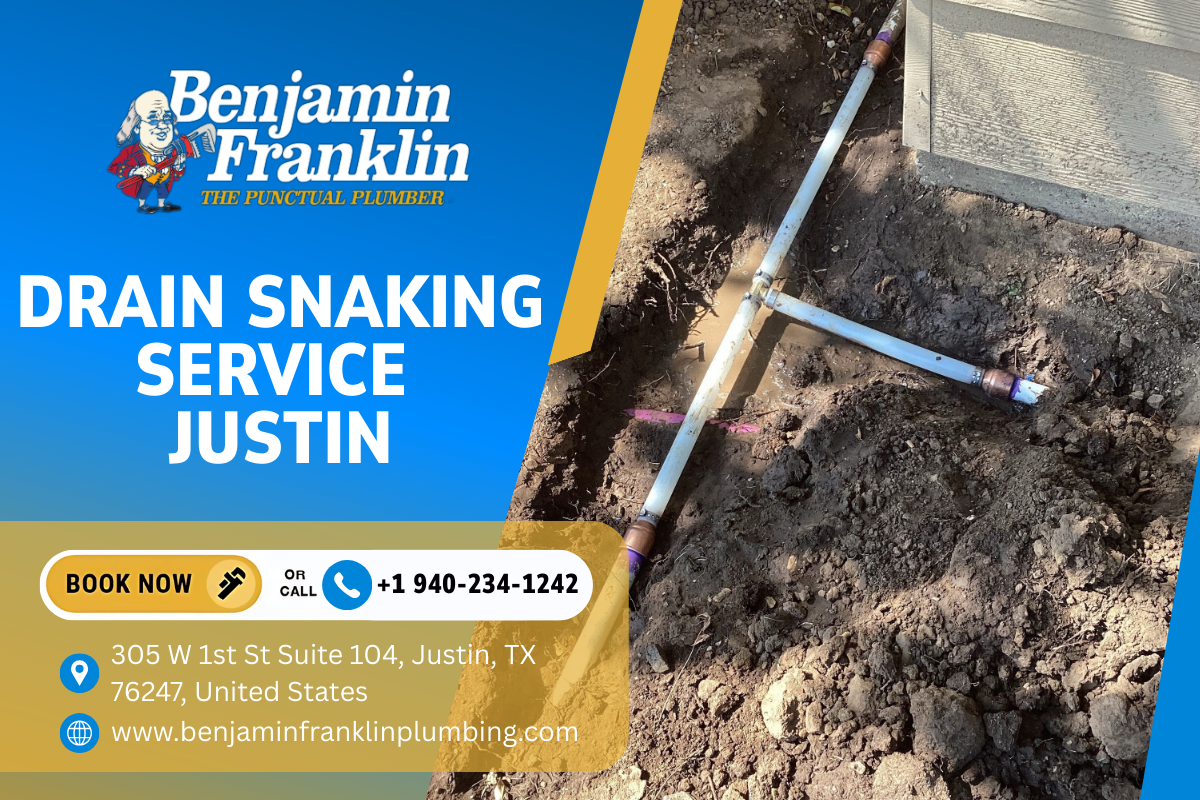


Property investors in Justin typically keep a sharp eye on roofing, HVAC performance, exterior paint, and occupancy rates. Drains rarely make the top five concerns until a tenant texts at 6:12 a.m. about sewage backing into a first-floor shower. Drainage problems don’t just frustrate occupants. They erode cap rates by creating vacancy days, forcing emergency dispatch fees, and accelerating hidden damage inside walls and subfloors. Thoughtful planning around sewer drain cleaning, paired with targeted upgrades and a clear service protocol, pays back in fewer calls, lower make-ready costs, and better tenant retention.
What rental portfolios in Justin uniquely face
The region around Justin blends older ranch houses, newer slab-on-grade builds, and light commercial mixed into residential pockets. That mix produces a quirky set of drain realities. Older houses with cast iron or Orangeburg remnants often suffer from internal corrosion or ovalized pipe sections that catch debris. Newer homes with PVC can still have bellies from poor compaction, especially along long driveway runs. Generational tree canopies make for quiet streets and aggressive root intrusion. On the tenant side, you get variability: one unit hosts a family with toddlers who feed a fascination with flushable wipes, while another belongs to a traveling nurse who’s never there, which ironically allows grease in a kitchen line to cool, congeal, and harden. The upshot is simple: even when a property looks cosmetically sound, the drain line doesn’t care. It obeys physics, slope, and what goes down it.
The true cost of a slow drain
Investors often budget for clogged drain repair as a one-off nuisance. The accounting looks different when you factor all of the downstream costs that arise from hesitation. A tub that drains slowly today becomes standing water tomorrow, which nudges tenants toward abrasive cleaners. Those chemicals can etch enamel and accelerate gasket wear. A toilet that gurgles intermittently signals venting or downstream restriction. Ignore it, and you’ll be paying for subfloor drying, vinyl plank replacement, and a week of vacancy after demo. On the commercial side, a small strip center with a salon and a sandwich shop can run fine for months, then suddenly require an after-hours sewer drain cleaning when the shared main plugs. The dispatch premium for off-hours service adds 30 to 60 percent in my experience. Multiply that by twice a year and compare it to the cost of a scheduled hydro jetting service once annually. The math favors prevention almost every time.
What a “normal” blockage looks like in Justin
Patterns emerge after a few dozen calls. Primary culprits: grease and soap scum in kitchen lines, wipes and feminine products in bathrooms, and roots seeking moisture where a fitting has shifted or a gasket has aged. Cast iron scale flakes pile into little shelves inside the pipe, catching hair and paper. PVC isn’t immune; its smooth walls help, but any flat spot in grade invites accumulation. Neutral pH water and mild detergents alone don’t chew through a quarter-inch of cooled bacon grease beneath 30 feet of pipe. That calls for mechanical or hydraulic force. The choice between a cable machine and water at 3,000 to 4,000 PSI isn’t theoretical. It shows up on the invoice and in how long the fix lasts.
Clearing versus cleaning
Many owners assume a cleared line equals a clean line. A line is cleared when flow is restored. A line is cleaned when the interior diameter has been scoured back to near-original capacity, with soft buildup removed rather than just punched through. A basic drain cleaning service often starts with a cable machine. With the right cutter heads, you can chew through roots and paper dams. But cables leave behind a film of grease. Hydro jetting goes further by cutting and flushing accumulation off the pipe walls. In a property where tenants rotate yearly and habits vary, cleaning buys you time and reduces the odds of a callback.
Where hydro jetting fits the strategy
Hydro jetting shines in three cases I see repeatedly:
- Long, flat kitchen runs where grease layers like candle wax and a cable keeps punching a hole that reclogs in a month. Root-prone rear easements where seasonal groundwater draws roots through a joint. Jetting with a root-cutting nozzle trims growth more evenly and flushes debris out rather than leaving strings to re-tangle. Commercial tenant mixes with heavy sinks or floor drains. Restaurants, salons, and pet grooming facilities in particular benefit from scheduled jetting.
For a typical single-family in Justin, a hydro jetting service every 18 to 36 months on the main is usually sufficient if tenants follow basic guidelines. If you own a fourplex with shared mains and frequent turnover, annual jetting is cheap insurance. The key is not to oversell it. For a simple paper clog in a 2018 PVC bath line, a skilled tech with a small cable often solves the problem in under an hour. Save jetting for lines with a history of grease, roots, or recurring slowdowns.
Camera inspection: the best money you don’t want to spend twice
I encourage owners to budget for a camera inspection after any significant blockage, especially if it’s not the first one in a twelve-month span. The video tells you whether you have a belly, a bad coupling, or residual debris. Without it, you’re guessing. With it, you make decisions: schedule jetting, plan a spot repair, or add an accessible cleanout. I keep clips labeled by address and date. When a tenant reports a problem later, we can compare. It’s also a lifesaver during acquisition. If the seller balks at an inspection, set aside a contingency fund. A post-close surprise on a collapsed main can eat months of cash flow.
Cleanout access: small line item, big leverage
Many older homes in Justin either lack a usable exterior cleanout or hide it beneath landscaping. If your tech spends 45 minutes fishing through a rooftop vent or pulling a toilet just to access the line, you’ve more than paid for adding a proper cleanout. A two-way cleanout near the foundation lets you address upstream and downstream issues quickly, makes hydro jetting straightforward, and reduces interior mess during service. I’ve had tenants renew simply because service was fast and left no trace. That’s not luck. It’s build-out design.
Tenant education that doesn’t sound like scolding
You can paste a list of forbidden items on the inside of a cabinet door and still get wipes in the line. The message works better when it’s framed as shared interest. I hand tenants a one-page “Keep the drains happy” sheet at move-in. It explains that a few simple habits help them avoid surprise appointments and disruptions. Rather than a long rule list, I give reasons: wipes don’t break down like paper, grease cools and hardens in the line, and bath bombs with petals and glitter don’t vanish. I mention that drain cleaning services are part of property care, not a penalty, but that misuse can lead to back-charges per the lease. Most people respond to clarity and fairness.
When to treat a call as an emergency
Patterns help triage. A single slow sink is inconvenient. Multiple fixtures on the same level gurgling signals a main restriction. Any sign of sewage surfacing, even a small amount around a floor drain, justifies an urgent call. In multi-tenant buildings, err on the side of speed because one unit’s backup becomes everyone’s problem. I keep a short text template for tenants to send when there’s a drain issue: describe which fixtures are affected, note any gurgling, and avoid running water until we advise. In practice, this reduces water volume entering a compromised line and shrinks cleanup costs.
The return on prevention
Owners sometimes view recurring maintenance as a nice-to-have. A simple ledger analysis changes minds. Take a three-bedroom rental with https://writeablog.net/pjetusazdt/stay-ahead-of-the-game-with-preventative-drain-maintenance-qk5z a history of a kitchen line clog every 10 to 14 months. Two emergency calls over two years, including an after-hours fee and minor drywall patching, easily surpass the cost of a scheduled cleaning program. If hydro jetting every two years prevents both events, you’ve improved cash predictability and tenant satisfaction, and you’ve likely protected the cabinets from moisture damage. Add a camera inspection after the first jetting. If you see a belly or a chronic grease catch point, you can plan a targeted fix rather than reacting to each flare-up.
DIY boundaries and why they matter
Some owners keep a small hand auger on-site. Fine for a simple bathroom sink trap with hair. Anything beyond that risks damage. Tenants pouring acid-based openers into drains makes the next service dangerous. The fumes and splash risk are real. Lease language should discourage chemical use and promise quick response from management. I’ve paid for a few minor calls out of pocket just to reinforce the message. It pays back in fewer Saturday surprises and safer working conditions for techs.
Materials and age: reading the tea leaves
If you’re not sure what’s under a given house, the era of construction gives clues. Pre-1970 often means cast iron inside and clay or Orangeburg outside. Mid-70s to early 90s may be a blend, with transitions creating weak points. Newer builds tend toward PVC throughout. Each material fails in its own way. Cast iron scales and shrinks interior diameter. Clay joints invite roots. Orangeburg deforms under load. PVC depends heavily on installation quality and soil compaction. After a camera inspection, you can map likely maintenance intervals and decide whether to budget for trenchless spot repair, a cleanout addition, or just routine cleaning.
Working relationship with a local provider
Consistency beats shopping every call. If you own multiple doors in Justin, align with a contractor who knows your properties, keeps notes, and understands your response standards. I keep a service matrix: which addresses have exterior cleanouts, which have root history, who needs evening access only, who has a tenant with special health considerations, and who needs prior notice to secure pets. This context lets a crew show up prepared. They bring the right cutter heads or jetting nozzles the first time. When they already know that 218 has a long flat kitchen run, they arrive with a plan instead of experimenting on the clock.
Transparent scope before the first wrench turns
Ask for a clear scope when you call for sewer drain cleaning. Will they start with a cable? Under what conditions do they recommend hydro jetting? Is a camera inspection included or optional? What’s the surcharge for after-hours? A good drain cleaning service in Justin should answer without hedging. I don’t mind paying more for capability and honesty. I do mind paying twice because the first crew “restored flow” without addressing the grease shelf that caused the issue.
The role of property managers
If you delegate to a manager, set policy around drains the same way you do for HVAC filters and pest control. Spell out what constitutes an emergency, who authorizes after-hours dispatch, and when to require camera footage. Managers juggle dozens of priorities; a simple checklist helps them make good choices consistently. Ask for quarterly summaries of service calls. A pattern of frequent clogged drain repair at a single address usually points to a physical issue that deserves capital attention.
Special cases: multi-unit buildings and mixed-use
In a duplex or fourplex with shared lines, tenant habits blend. One side’s wipes become everyone’s problem. Consider unit-level strainers in showers and kitchen sinks and a shared guideline sheet at common areas. For mixed-use properties, keep separate cleanouts for commercial bays when possible. A salon’s hair and product residue will overwhelm a line that also serves residential laundry. If that separation doesn’t exist, increase the frequency of drain cleaning services and communicate the plan with tenants. Better to schedule a morning jetting once a year than to stump everyone’s operations on a Saturday.
Pricing realities and what affects them
Rates vary across providers, but a few constants hold. Easy access through a ground-level cleanout with a straightforward cable job is your least expensive scenario. Add a toilet pull, a rooftop vent run, or a long exterior run and you’re paying for time and risk. Hydro jetting with proper safety setups costs more but often reduces the need for repeat visits. Camera inspections usually carry a flat fee, sometimes waived if you approve additional work. Ask about a portfolio rate if you have multiple doors. Predictable volume lets a contractor plan and price more favorably.
What “good” looks like after service
After a proper sewer drain cleaning justin investors should expect more than “it drains now.” You should have a short written summary: access point used, equipment deployed, what came back on the cable or was flushed during jetting, any signs of roots or sludge, and a recommendation for next steps. If a camera was used, request a labeled video file. File it. If the line was merely cleared to restore flow until a later repair, make sure everyone understands that it’s a stopgap and schedule the follow-up while the memory is fresh.
Building a simple preventive plan for a small portfolio
Owners new to drain planning often ask for a starter schedule. Here’s a concise approach that balances cost and risk without micromanagement:
- During make-ready: verify or install an exterior two-way cleanout; camera inspect the main once; correct obvious issues; give tenants a one-page drain-use guide. Yearly: schedule a basic drain cleaning in Justin only for addresses with prior issues; otherwise, monitor and log calls. Every two to three years: hydro jet the main at properties with past grease or root problems; camera afterward to check progress. After any repeat clog within 12 months: require camera inspection; consider a targeted repair or grade correction. Portfolio review each winter: update your matrix, adjust frequencies, and negotiate rates with your drain cleaning service Justin partner.
Why language in your lease matters
A lease can’t fix a belly in the line, but it can define responsibility. Specify that normal wear and tear is the owner’s duty, while misuse is the tenant’s. Clarify examples without sounding antagonistic: wipes marketed as flushable, grease disposal down sinks, foreign objects in toilets. Cite that chemical drain openers are prohibited and that management will respond promptly to drain concerns. When everyone knows the rules, disputes shrink and cooperation grows.
Anecdote from a breakfast-time backup
A three-bedroom rental near the greenbelt kept clogging every six months. Two different providers cleared it, and each time flow returned, then slowed again. On the third visit, we insisted on a camera. At 42 feet, the pipe dipped, forming a shallow belly that collected grease. A cable would punch a hole, water would flow, and the grease would reaccumulate. We added a cleanout, scheduled a hydro jetting service to scour the line, and switched the trap arm pitch slightly during a small kitchen renovation. The belly remained, but with better access and jetting every two years, the problem vanished. Cost over three years: less than the rent on a single vacant month.
Choosing between repair and replacement
Not every camera finding demands excavation. A single offset joint with minor root ingress can be managed with periodic cleaning and monitoring, especially if excavation would tear up a hardscape tenants rely on. Multiple offsets or a crushed section call for a targeted repair. Trenchless options exist for certain materials and diameters, though you’ll want a contractor who can show past local installs, not just brochures. Replacement shines when you’re pairing it with a larger renovation or site work already planned. The goal is to spend once and solve the right problem, not overspend solving the wrong one.
The investor’s mindset applied to drains
Treat drainage like you would a roof. You don’t wait for inside leaks to appear before considering replacement. You identify age, material, and risk, then stagger attention across the portfolio. Drain cleaning services justin should be a line item with rationale behind it, not an afterthought. Over time you’ll see fewer frantic texts and more predictable service windows. Tenants notice reliability. So do spreadsheets, once emergency line items stop peppering the P&L.
Local nuance, lasting payoff
Justin’s blend of housing ages, soil conditions, and tree-lined streets create specific drain challenges. You don’t need to turn every property into a laboratory. A handful of practical moves—accessible cleanouts, camera confirmation when patterns emerge, scheduled hydro jetting where it makes sense, and tenant education with a light touch—covers most of the risk. When a true repair is needed, your records will justify the spend and guide the scope. The difference shows up in smooth turnovers, fewer middle-of-the-night calls, and a property that feels cared for.
Whether you manage one duplex or a dozen doors, make clogged drain repair justin part of your maintenance rhythm rather than a reaction. Align with a dependable drain cleaning service justin, insist on clarity, and keep a humble file of camera clips, dates, and outcomes. The system beneath the slab rarely earns compliments, but it silently protects your investment every day it works as designed.